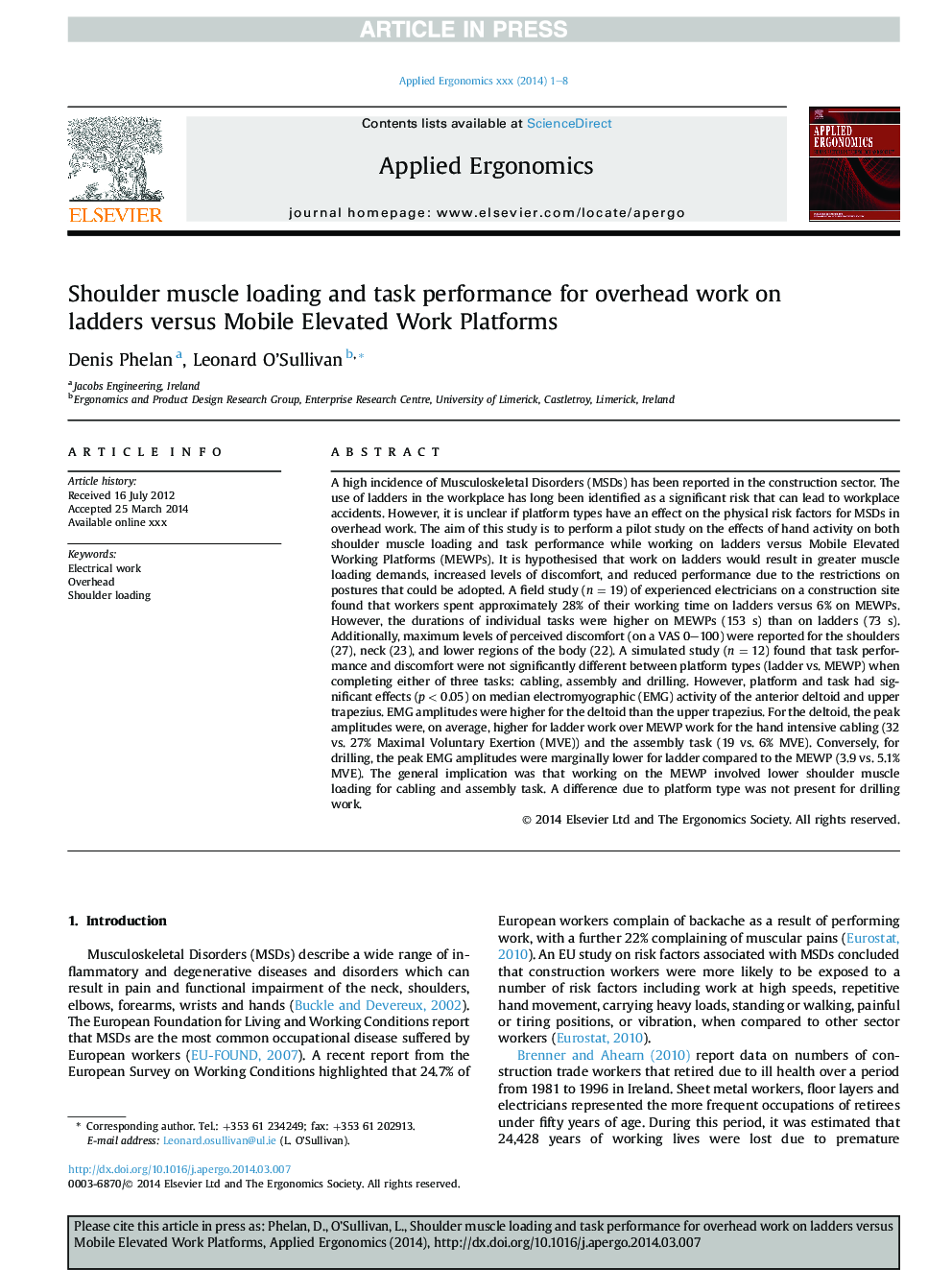| کد مقاله | کد نشریه | سال انتشار | مقاله انگلیسی | نسخه تمام متن |
|---|---|---|---|---|
| 10365742 | 872208 | 2014 | 8 صفحه PDF | دانلود رایگان |
عنوان انگلیسی مقاله ISI
Shoulder muscle loading and task performance for overhead work on ladders versus Mobile Elevated Work Platforms
ترجمه فارسی عنوان
بارگذاری عضلات شانه و عملکرد وظیفه برای کارهای سربار در نردبان در مقابل سیستم عامل های تلفن همراه با کارایی بالا
دانلود مقاله + سفارش ترجمه
دانلود مقاله ISI انگلیسی
رایگان برای ایرانیان
کلمات کلیدی
کار برق در بالای سر، بارگیری شانه،
موضوعات مرتبط
مهندسی و علوم پایه
مهندسی کامپیوتر
تعامل انسان و کامپیوتر
چکیده انگلیسی
A high incidence of Musculoskeletal Disorders (MSDs) has been reported in the construction sector. The use of ladders in the workplace has long been identified as a significant risk that can lead to workplace accidents. However, it is unclear if platform types have an effect on the physical risk factors for MSDs in overhead work. The aim of this study is to perform a pilot study on the effects of hand activity on both shoulder muscle loading and task performance while working on ladders versus Mobile Elevated Working Platforms (MEWPs). It is hypothesised that work on ladders would result in greater muscle loading demands, increased levels of discomfort, and reduced performance due to the restrictions on postures that could be adopted. A field study (n = 19) of experienced electricians on a construction site found that workers spent approximately 28% of their working time on ladders versus 6% on MEWPs. However, the durations of individual tasks were higher on MEWPs (153 s) than on ladders (73 s). Additionally, maximum levels of perceived discomfort (on a VAS 0-100) were reported for the shoulders (27), neck (23), and lower regions of the body (22). A simulated study (n = 12) found that task performance and discomfort were not significantly different between platform types (ladder vs. MEWP) when completing either of three tasks: cabling, assembly and drilling. However, platform and task had significant effects (p < 0.05) on median electromyographic (EMG) activity of the anterior deltoid and upper trapezius. EMG amplitudes were higher for the deltoid than the upper trapezius. For the deltoid, the peak amplitudes were, on average, higher for ladder work over MEWP work for the hand intensive cabling (32 vs. 27% Maximal Voluntary Exertion (MVE)) and the assembly task (19 vs. 6% MVE). Conversely, for drilling, the peak EMG amplitudes were marginally lower for ladder compared to the MEWP (3.9 vs. 5.1% MVE). The general implication was that working on the MEWP involved lower shoulder muscle loading for cabling and assembly task. A difference due to platform type was not present for drilling work.
ناشر
Database: Elsevier - ScienceDirect (ساینس دایرکت)
Journal: Applied Ergonomics - Volume 45, Issue 6, November 2014, Pages 1384-1391
Journal: Applied Ergonomics - Volume 45, Issue 6, November 2014, Pages 1384-1391
نویسندگان
Denis Phelan, Leonard O'Sullivan,
